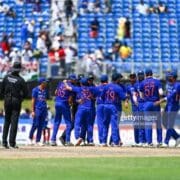BSCFA tells BSI/ASR to prove claims about costs
Black Immigrant Daily News
According to the Belize Sugar Cane Farmers Association (BSCFA), BSI/ASR has agreed to give them the right to audit their financial statements. But the association says that is not what they’re asking for.
by Khaila Gentle
BELIZE CITY, Tues. Oct. 25, 2022
The Belize Sugar Cane Farmers Association (BSCFA) says that they want BSI/ASR to provide them with proper documentation that verifies the accuracy of financial figures in statements given to them when they receive payment for sugar cane deliveries. This week, the association held another press conference at their headquarters in Orange Walk Town to explain some of the proposals they have made to BSI in an effort to resolve the impasse between the two parties before the start of the crop season this December.
According to the CEO of the BSCFA, Oscar Alonzo, while BSI has indicated that it is willing to give the farmers the right to audit its financial reports, which are presented in the form of a document known as a Net Strip Value (NSV) statement, the farmers currently have no means of verifying the accuracy and relevancy of the statements. This, he says, is why they have been asking BSI for additional documentation.
“In that manner, they have offered, in my view, a red herring, in terms of saying ‘we will give you the right, and we will include in the commercial agreement a clause that gives BSCFA the right to audit the figures that [are] in that NSV statement’,” Alonzo said.
The BSCFA says that it is not asking for an audit—that the farmers simply want some level of transparency that will allow them the confidence that they’re getting paid fairly for their product. And according to Alonzo, the audited accounts, invoices, and management statements that could make that possible have not been made available to them by BSI since 2014.
“There is nothing wrong with [giving BSCFA] the right to audit, but in our view that right would be meaningless if the figures that they will propose to us for us to audit do not reflect the true value before we attempt to audit,” he said.
“We’re not asking to audit their operations,” Alonzo reiterated. “What we are asking for is documentation—detailed documentation—that will enable us to verify the cost that they are deducting from the gross revenues for the sales of sugar and molasses to determine if we are getting fair payment for our product.”
The sugar crop season is set to begin less than two months from now. The standstill has led both sides to claim that the viability of their operation would be put at risk if a reasonable agreement is not made soon.
Last week, in an AMANDALA article dated Thursday, October 20, we reported that the BSCFA chairman, Andy Westby, had stated that farmers would likely begin phasing out of the sugar industry if the conflict is not resolved.
Apart from a lack of transparency that Oscar Alonzo says has fueled an atmosphere of distrust for decades now, another point of contention between BSCFA and BSI/ASR is the BSCFA’s proposal to split gross revenues at a 40/60 ratio, with the millers receiving 40% and the producers (the farmers) receiving 60%.
Javier Keme, chairman of the Finance Committee of the BSCFA, explained that the 40/60 formula is not something the association chose arbitrarily, but is in fact a model used in various parts of the world.
“In Mauritius, there is 78% for the producers and 22% for the mill from the gross revenues. In the case of Costa Rica, there is 65.5% for the producers and the rest for the mill. In Mexico, there is a straight split of 57% for the producers and 43% for the mills. And in Guatemala, it’s 56/44. And here in Santander, we have a split of 54/46, but there is an additional benefit that the farmer gets on top of the 46% from the payment of sugar, which is a $3 for the use of bagasse, per ton, for the sale of electricity to the national grid,” he said.
According to Keme, the 40/60 split is a simpler and, more importantly, transparent formula that will remove the distrust that the producers feel towards the millers—thus creating a better working relationship between the two entities.
The overhead costs that BSI/ASR had been deducting from the gross revenues, Keme further explained, would be included in the company’s 40%, under the arrangement being proposed by BSCFA. BSI/ASR has suggested, however, that it would not be feasible for them to cover all those overhead costs—which include transport and shipping—on their own.
Note: In a previous article we incorrectly stated that the 60/40 split would result in 40% of gross revenues going to the sugarcane farmers and 60% to the millers. What we should have stated is that 60% would go to the producers and 40% to the millers.
NewsAmericasNow.com







Leave a Reply
Want to join the discussion?Feel free to contribute!